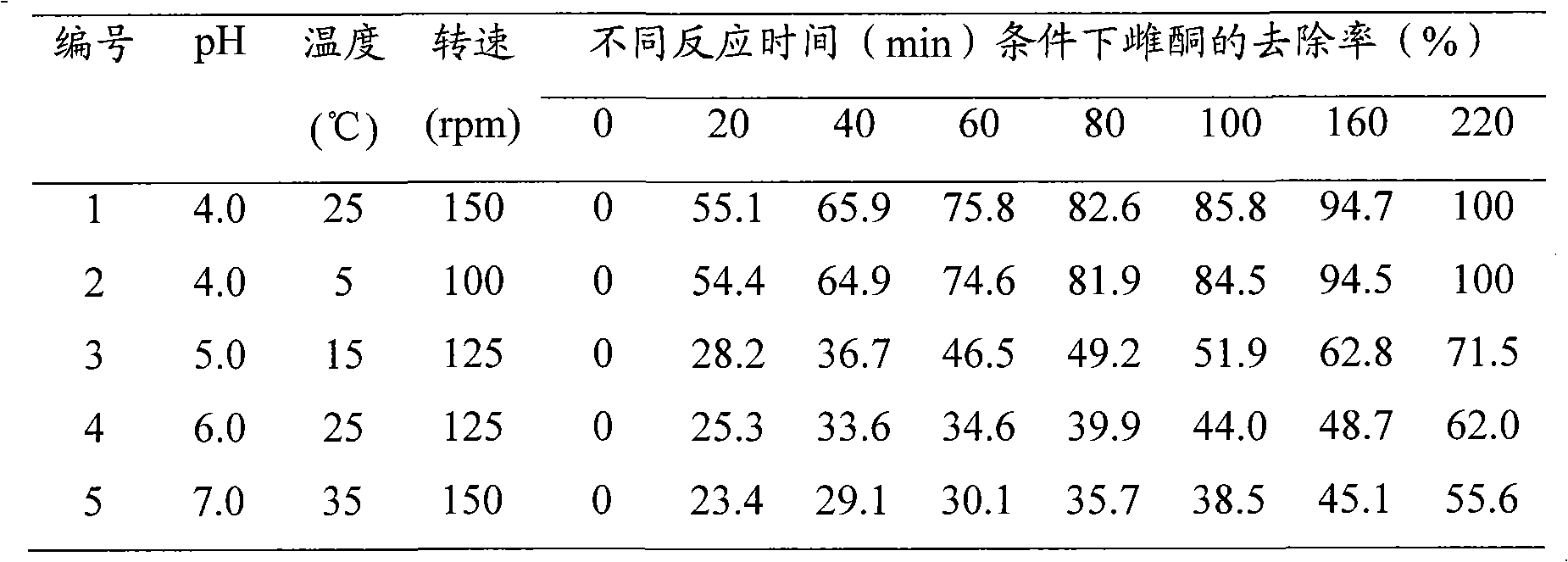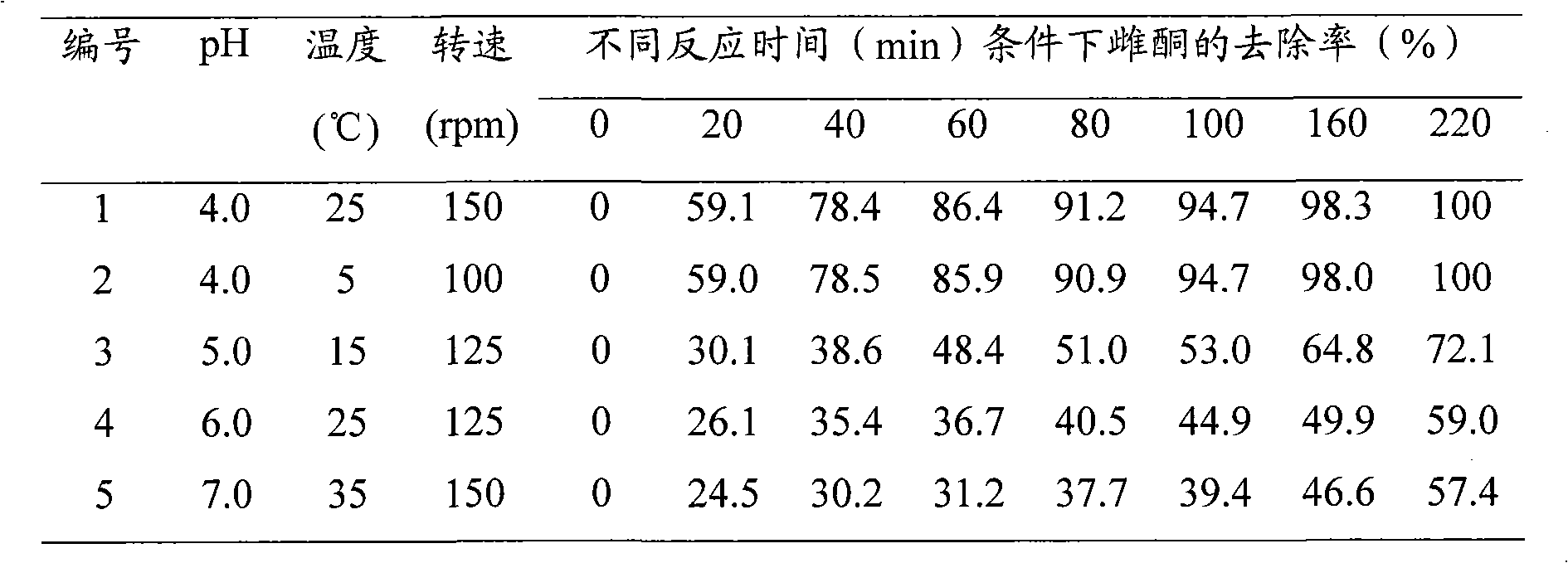Degradation process for environment estrogenic pollutant in water body
A technology for environmental estrogens and pollutants, which is applied in the field of degradation of environmental estrogenic pollutants, can solve the problems of complex operating conditions, difficult industrial promotion, and long degradation time, and achieves simple system, low operating cost, and cheap economical dosage. Effect
- Summary
- Abstract
- Description
- Claims
- Application Information
AI Technical Summary
Problems solved by technology
Method used
Image
Examples
Embodiment 1
[0023] Take a 250mL flat-bottomed flask, add 0.05mol / L KMnO under nitrogen protection 4 Solution 50mL and 0.05mol / L NaOH solution 50mL, add 0.05mol / L MnCl dropwise under stirring 2 Solution 50mL, after the reaction is complete, let it stand for 30min, the precipitate generated by filtration is new ecological manganese dioxide, wash 5 times with twice distilled water to remove the ions on the surface of the precipitate, and finally store it in 100mL of double distilled water for later use. This colloidal solution A is mixed evenly, and a certain volume is taken for use.
Embodiment 2
[0025] Add the solution of Example 1A in 100 mL of estrone (Estrone, E1) contaminated aqueous solution with a concentration of 6 μmol / L, control the initial mass concentration of manganese dioxide to be 15 μmol / L, control the pH of the system to be 4.0~7.0, and the temperature to be 5~ The system solution was oscillated at 35°C with a rotation speed of 100-150 rpm. The estrogen content in the water before and after degradation was determined by GC-MS. The results are shown in Table 1.
[0026] Table 1: The results of degradation of estrone pollutants by new ecological manganese dioxide
[0027]
[0028] Example 2:
[0029] Add solution A to 100 mL of estradiol (17β-Estradiol, E2) contaminated aqueous solution with a concentration of 10 μmol / L, control the initial mass concentration of manganese dioxide to 25 μmol / L, control the pH value of the system to 4.0 to 7.0, and the temperature to 5 Mechanically agitate the system solution at ~35°C with a rotational speed of 100-150...
Embodiment 3
[0033] Add solution A to 100 mL of estriol (E3) contaminated aqueous solution with a concentration of 0.1 μmol / L, control the initial mass concentration of manganese dioxide to 0.25 μmol / L, control the pH value of the system to 4.0 to 7.0, and the temperature to 5 The system solution was oscillated at ~35°C with a rotational speed of 100-150rpm. The estrogen content in the water before and after degradation was measured by GC-MS. The results are shown in Table 3.
[0034] Table 3: The results of degradation of estriol pollutants by new ecological manganese dioxide
[0035]
PUM
 Login to View More
Login to View More Abstract
Description
Claims
Application Information
 Login to View More
Login to View More - R&D
- Intellectual Property
- Life Sciences
- Materials
- Tech Scout
- Unparalleled Data Quality
- Higher Quality Content
- 60% Fewer Hallucinations
Browse by: Latest US Patents, China's latest patents, Technical Efficacy Thesaurus, Application Domain, Technology Topic, Popular Technical Reports.
© 2025 PatSnap. All rights reserved.Legal|Privacy policy|Modern Slavery Act Transparency Statement|Sitemap|About US| Contact US: help@patsnap.com



